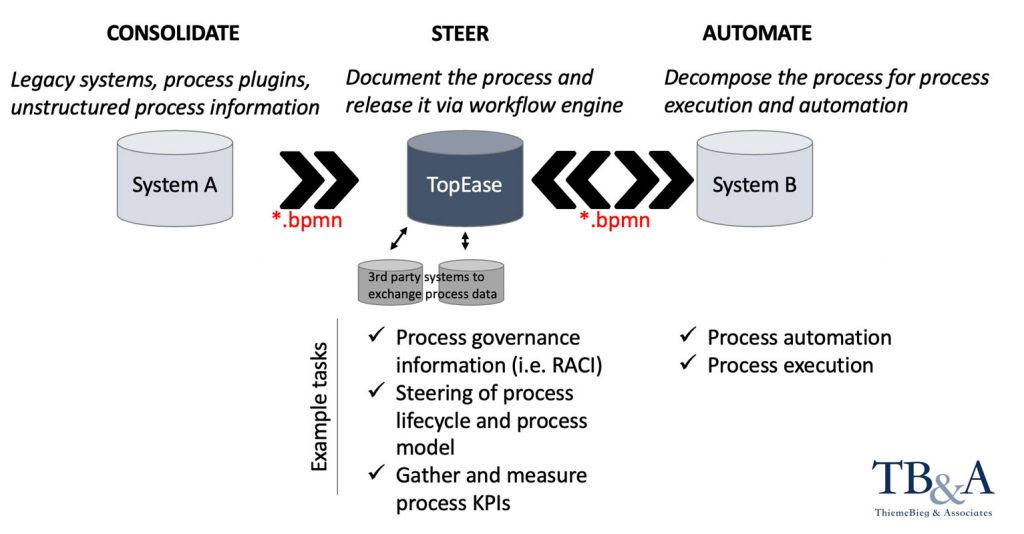The following documentation gives TopEase users an initial overview of modeling with BPMN 2.0 in TopEase Process Management. Modeling in TopEase is carried out according to the OMG Business Process Model and Notation Standard, with adaptations of the functionality to the requirements of process governance. You can find further modeling examples on our Youtube channel. In addition, we also offer personal training courses on the topic of TopEase Business Process Management.
In the start screen, all processes are managed in the form of the central process model. Depending on the user roles & rights, new processes and process diagrams can be created and managed here. To switch directly to modeling, a new activity diagram can be created using the “+” button. In the following screen, the name of the activity diagram is entered as well as its location in the process structure.
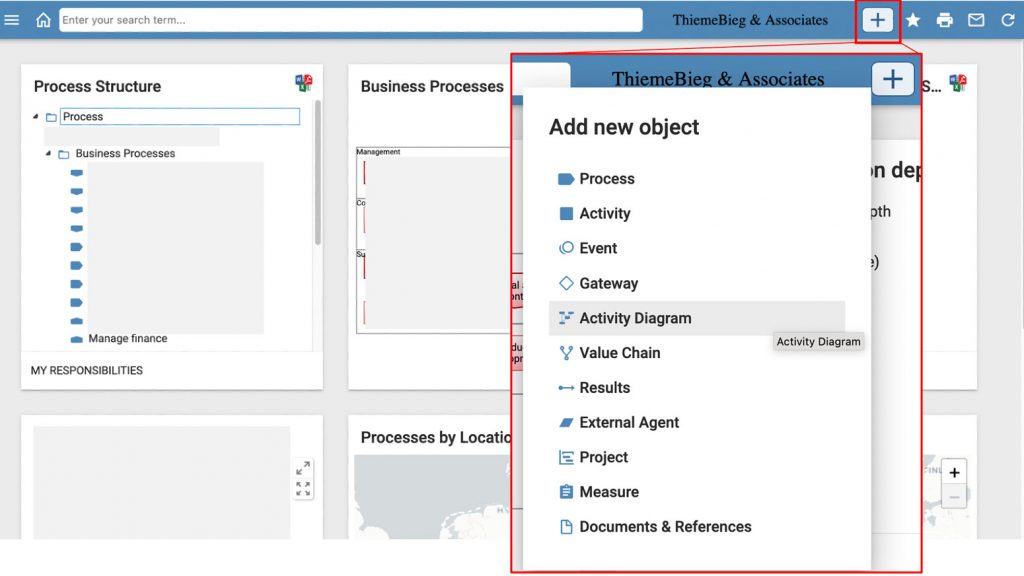
The diagram editor always opens the default diagram. In TopEase it is possible to use several diagram types for a process model. Depending on the selected diagram type, it is possible to display additional information about the process, such as (ICS) controls or assets assigned to individual process steps (e.g. software systems or physical assets such as production facilities), or to display the process flow in SwimLanes with responsibilities. Depending on the selected diagram type, additional buttons for additonal mappings can be displayed in the diagram editor. The diagram templates can be customized and managed via TopEase Designer, and training on setting diagram templates can be provided by the manufacturer or ThiemeBieg.
The most important functions are listed below, all buttons are also labeled by mouseover:
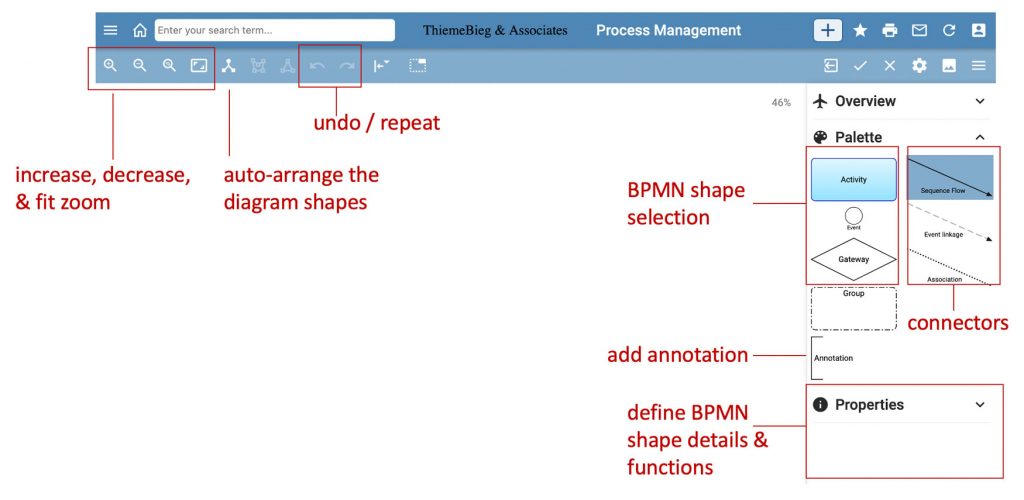
All the following examples and models were created in English. In TopEase it is also possible to model and display models in several languages.
The BPMN 2.0 elements are dragged into the modeling area with the mouse, and can be linked with the other elements here.
Take different elements in the modeling area and draw a sequence flow between the elements by clicking on an element and dragging the mouse to the next element:
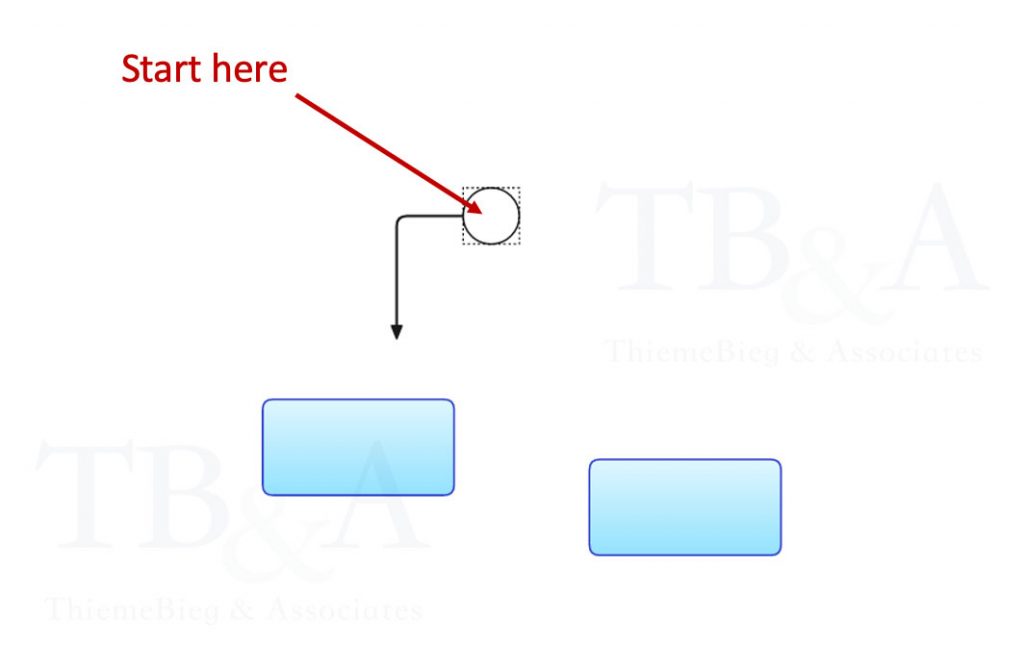
All BPMN elements can be labeled. The element is selected, and in the properties the label is selected and labeled. The diagram updates automatically.
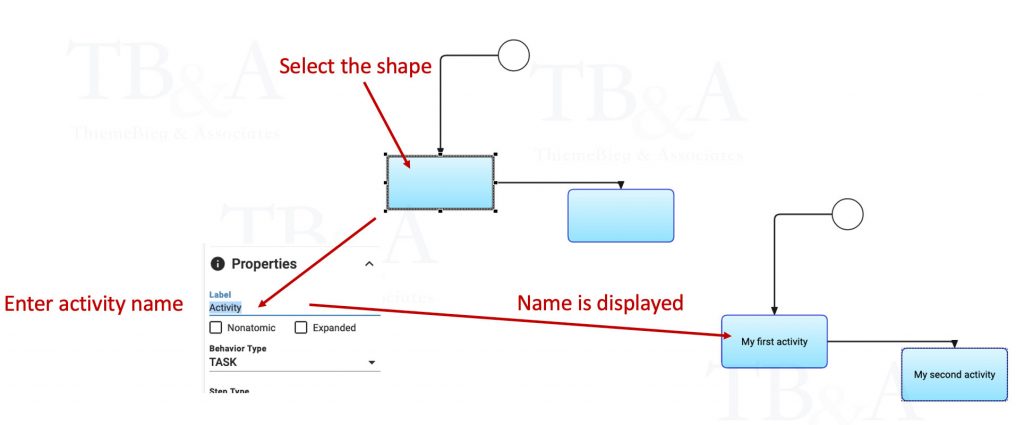
In TopEase BPM (Process Management) diagrams can be formatted automatically. Depending on the set chart type, the chart is formatted horizontally or vertically. The BPMN diagram settings can be set via the administration workstation (TopEase Designer).
To use the automatic layout, click on the “Layout” button and the model will adjust automatically.
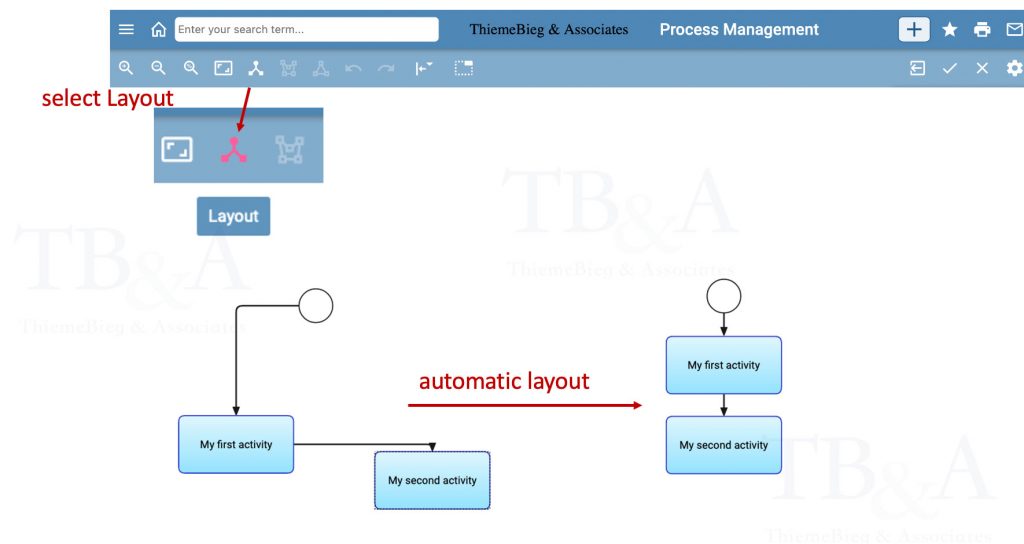
The BPMN 2.0 standard of the OMG (Objects Meta Group) supports over 100 different elements. To select a property of an element, the element is selected (here the activity object), and at Task Type the respective task type is selected. The selection of the typing of gateways and events is done analogously. After the selection, the appropriate icon appears in the element (here: Send Message).
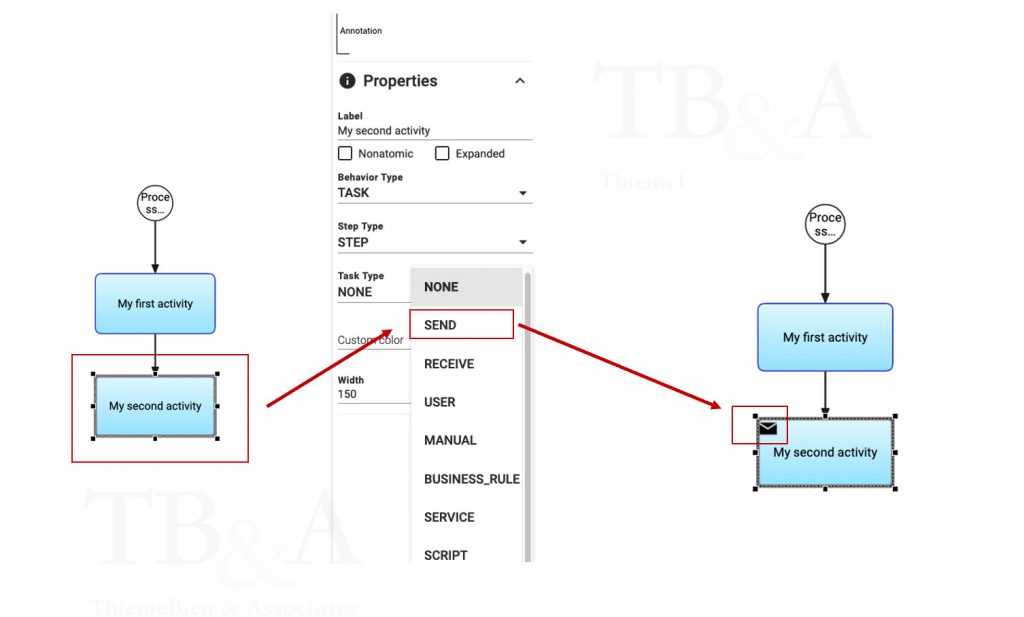
In TopEase Process Management as GRC software, it is possible to store all elements of a diagram with clear responsibilities. Responsibilities can then be represented in SwimLanes.
To do this, exit the diagram via the Exit button and select the respective element in the navigation structure and navigate to the “Overview” tab.
In the Overview tab, new roles can be added as responsible persons. It is not necessary to specify a person. After confirming the change, the change can be made for all other objects.
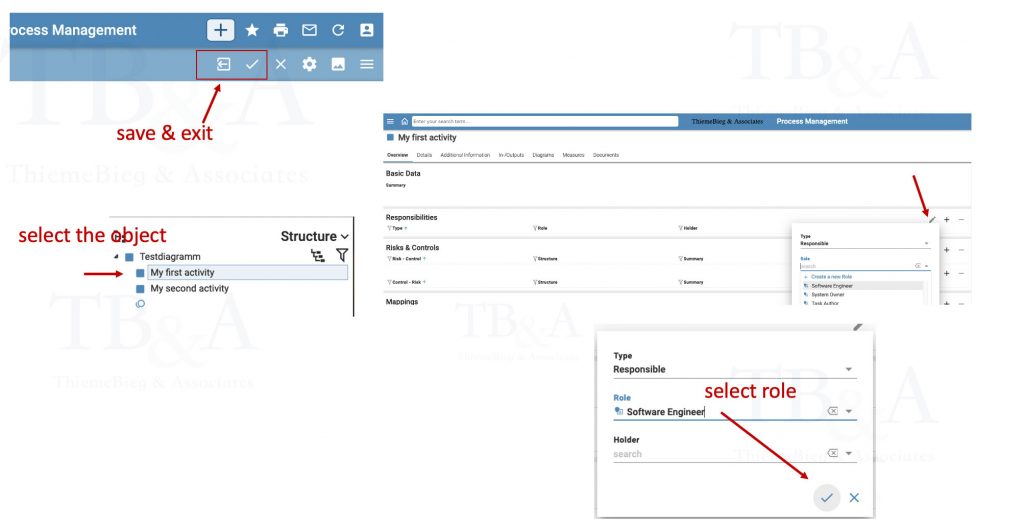
After all activities have been given a responsibility, the system switches back to the main activity and opens the model there. If the model does not have a SwimLane display, another model type must be selected.
If a diagram with SwimLanes is already available, as in the example, it can be opened directly via the double arrow.
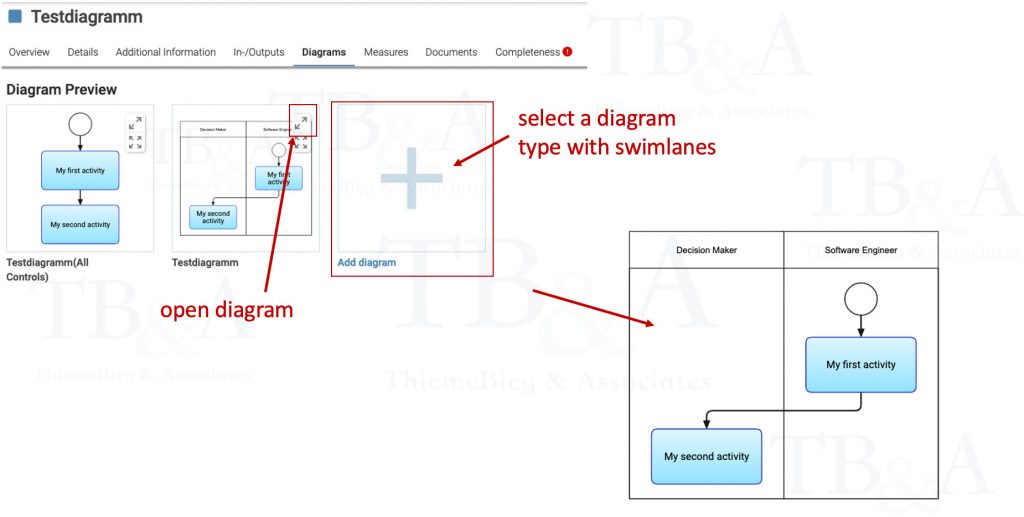
In TopEase BPM, objects in swim lanes can be modeled directly according to the BPMN 2.0 standard. For this purpose, the initial creation of swimlanes (as in the example above) is necessary. Subsequently, further objects can be entered into the swimlanes. The objects automatically take on the Swimlane property.
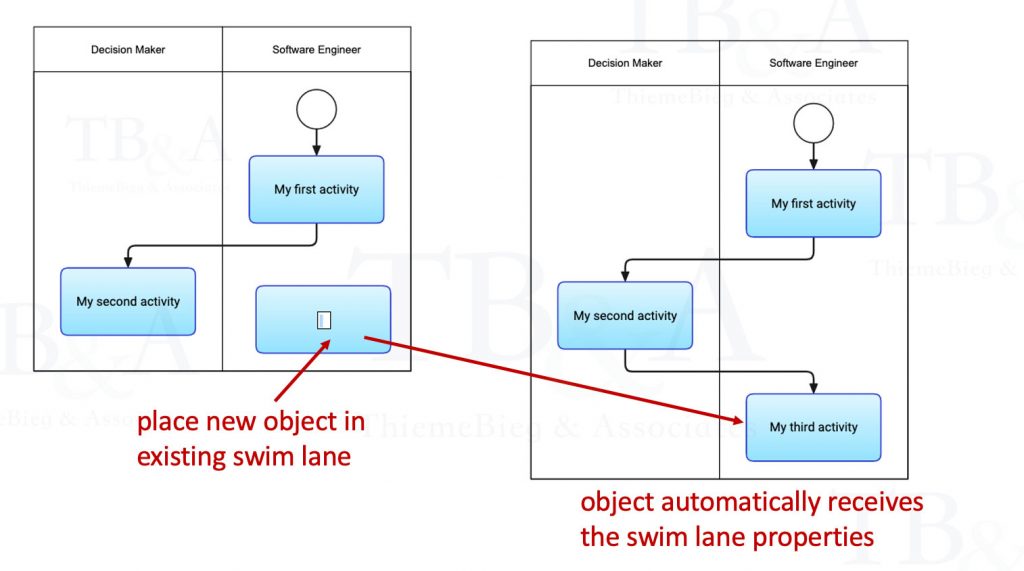
The following example shows a checkout process of a webshop:
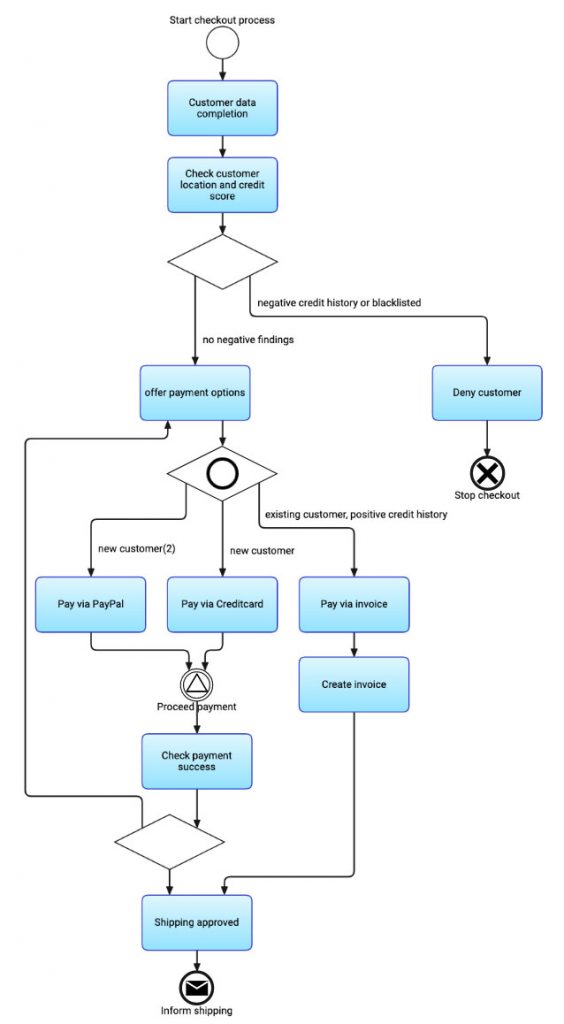
Detailed process description:
Processes always start with one or more start events, as well as end with one or more events. The start event start the “checkout process”.
Two activities (in the Shape Selection “Activity Shapes”) follow, followed by a gateway which represents a first selection, the check if the customer is already “negatively” known and if there are any outstanding claims against the customer. In the negative case, the customer should be rejected and the checkout canceled. In TopEase, the selection was represented with an exclusive gateway. The sequence flows following the gateway can be labeled via the Condition field, and thus the outputs of the gateway can be specified. The customer’s rejection is followed by a process termination, which was represented with an end event and “CANCEL” event type, the event type can be selected in the properties after clicking on the event. Formatting as an end event (thick frame) is automated in TopEase.
For new customers there are two payment options, existing customers with a positive credit history are also offered payment via invoice. This can be represented in BPMN 2.0 with an inclusive gateaway that allows multiple outputs based on a condition. The selection is made by clicking on the gateway and selecting the “Decision type” in the properties of the gateway.
After selecting the payment method, for Paypal and credit card the payments are made immediately, this is represented by an intermediate event. The formatting (two lines in the frame) is also done automatically here by TopEase. After completion of payments or issuance of the invoice, the release for shipment is made with a message to the logistics. The end event is automatically formatted, for the message to be sent the event type “Message” is selected. The selection is made by clicking on the event object, and selecting the event type.
As a preferred partner of Business-DNA, ThiemeBieg offers customized training courses as well as digital training materials for modeling with TopEase BPM. Contact us for an initial meeting.
TopEase supports the round-trip engineering of BPMN 2.0 models. The BPMN 2.0 import and export functionality requires a separate commercial plugin which can be obtained from ThiemeBieg. The import and export of BPMN 2.0 models is possible both via the web interface and via TopEase Designer (administrator workstation). Access rights to the BPMN 2.0 import and export function can be restricted via the roles and rights control.
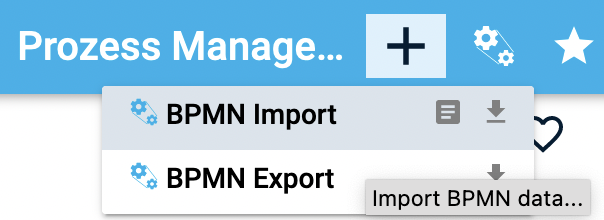
The BPMN 2.0 import and export function is often used as follows:
Consolidation of process data from legacy systems or previous systems (e.g. processes which were documented in the specialist departments via website plug-ins in third-party systems) in TopEase. For this purpose, the data is exported from the previous systems by means of a bpmn file and read into TopEase.
Control of the process model and the company in TopEase BPM: management of the entire process model of the company, representation of the dependencies between the processes, creation and management of overall value chains, management of the process life cycle, release of processes by means of electronic workflow, evaluation of process KPIs (e.g. lead times) and use of data from third-party systems (e.g. trading systems) which supply data to TopEase for company management.
In export, bpmn files are often passed to process systems for process automation and execution. The processes in these systems are derived from the governance processes, but differ in description due to automation; the focus is no longer on responsibilities and responsibility transitions as well as work products as in TopEase, but on the precise description of process execution with instances, technical interfaces and technical handover products.
